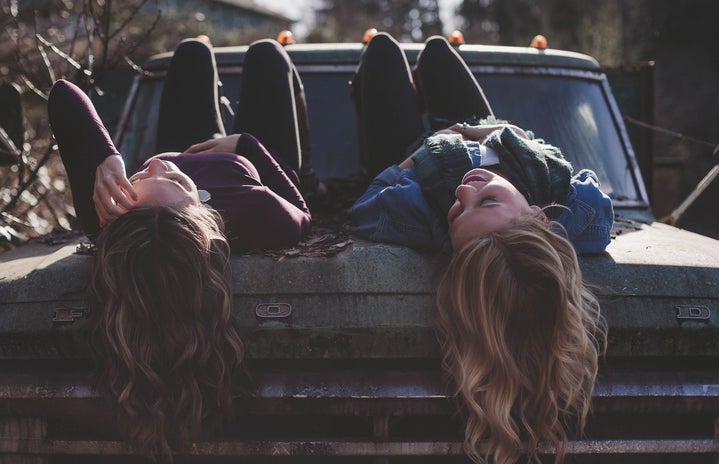On Tuesday, April 9th, HBO released the documentary Brandy Hellville & the Cult of Fast Fashion, directed by Eva Orner. The documentary exposes the overall sketchiness behind the Brandy Melville business model including the lack of sizes, environmental impact, and discriminatory practices, and even goes into the story behind their sub-brand John Galt (this one totally shocked me!). This conversation is not new; in fact, Brandy Melville has made the headlines several times including allegations of body shaming, racism, antisemitism, and discriminatory hiring practices. However, this documentary compiled all the claims against Brandy into one cohesive storyline, and now more than ever, it’s impossible to ignore the facts.
Brandy Melville is an agent of comparison. If you wore Brandy you were the “cool kid” and if you didn’t, you were the other. This in-group/out-group dynamic is quintessential Brandy and can be used to describe why it got the hype it did. Brandy furthered this agenda by intentionally hiring prototype “Brandy girls” to work at their stores. Brandy girls fit the mold of young, skinny, white, trendy, and popular.
The Brandy sizing model is one of the most contested aspects of the brand. Brandy actually started with sizes, but quickly switched to one size to keep the brand “exclusive.” The terms used started with one size fits all, then one size fits most, and finally to just one size. Arguments in favor of Brandy claim that the company isn’t forcing anyone to wear their clothes and if you don’t fit, then there are plenty of other stores to shop from. However, when young girls are starving themselves and developing potentially deadly eating disorders to fit the fad, it’s evident there’s a problem.
The documentary focuses largely on the environmental impact of Brandy Melville and fast fashion. When I think of the epitome of fast fashion, I often think of Shein (shown in Inside the Shein Machine). However, this feature proved to me that oblivion can be a nasty drug. Brandy attempts to add legitimacy to their brand with their “Made in Italy” tags, when in reality, the production starts in Italy and then is allegedly outsourced to China. Simply put, if a price is too good to be true, then the true costs are on the environment and unfair labor.
The film employed a stark contrast between YouTubers sharing their massive hauls of Brandy and then flashing to scenes of Kantamanto, Ghana in which floods of discarded clothes arrive daily. It also juxtaposes the American consumer with the Kantamanto way of sustainability. While the American teen dumps piles of Brandy clothes on her bed and feeds off instant gratification, the residents of Kantamanto are speaking the language of sustainability by mending, screenprinting, and resizing secondhand clothes. Fast fashion and the textile industry are a real American problem. Kantamanto teaches us that there is another way, but it requires us to reevaluate our relationship with our clothes.
What stood out most to me was the role of the teens at the core of their business model. Teen culture has always been very influential, and Brandy harnessed its power along with the impulses of being a teenage girl for profit. But not only were teens the ones buying and advertising for the brand, they were also behind the scenes hiring, photographing, and even managing. A witness in the documentary even shared that at Brandy, teen girls were doing the work that senior leadership would be doing at other companies.
The influence of teens and youth culture is apparent in all aspects of Brandy. From forming lines rounding the block at the Toronto store, to propelling the brand into fame, teens were the livelihood of the brand. And yet, it doesn’t treat them as such, shown clearly with the allegations of exploitation and sexual assault. Moreover, social media and Brandy are inextricably linked; Brandy owes itself to social media. Ironically, the origin of Brandy also started its demise as people took to social media to complain and advocate against the brand.
Growing up in Orange County, I had about as much exposure to Brandy Melville as you can get. I had friends that worked at the retail store, friends who modeled for Brandy, and virtually everyone owned Brandy. I remember growing into the Fashion Island location with a couple friends, and one of my friends was stopped and the employee asked to take a picture of her outfit, a scenario which is discussed frequently in the documentary. But at the time I didn’t think this was weird or creepy, I was just overcome with jealousy. Why wasn’t I stopped? This insecurity is the emotion that Brandy really taps into. As the documentary describes, Brandy taught girls that they were not enough, but that they could gain value through purchasing their material goods.
Following the release of the documentary, I’m curious if people’s spending habits will change accordingly. Past activism and exposés about the injustice at Brandy did not cause a significant hit in their sales. In fact, their only response was turning comments off on Instagram for a few weeks and then they were back to business as usual. How deep does the Brandy cult cut? Shoppers admit that they feel embarrassed or ashamed to be wearing Brandy, but is this enough to stop them? Admittedly, I own Brandy and several other fast fashion brands, but aim to be more conscious of my purchasing habits in the future. While I was vaguely aware of the majority of the information shared in the documentary, it reminded me of the importance of challenging what we blindly accept, and that as youth, we hold the influence to make the change, as long as its what we wish to see.



